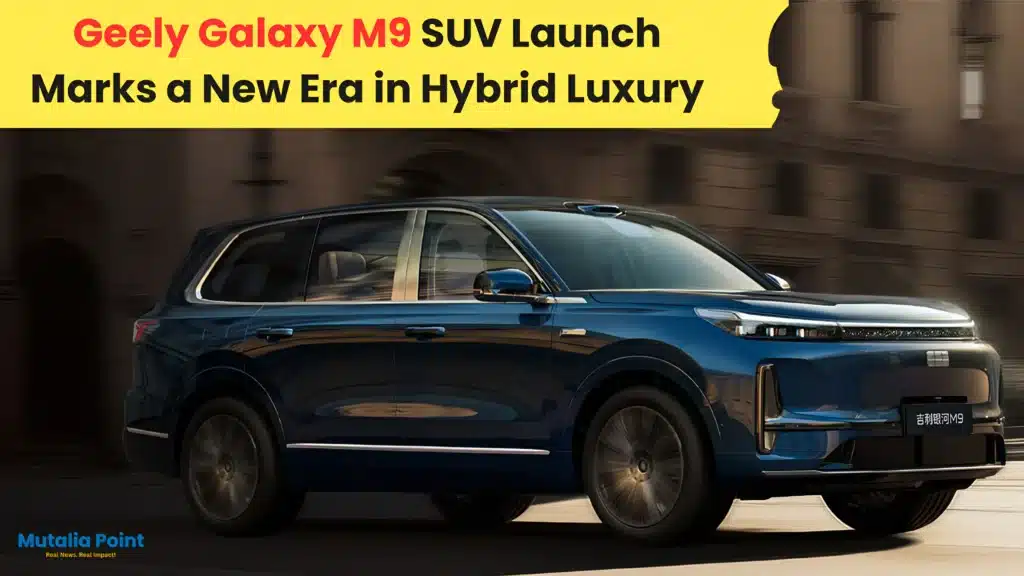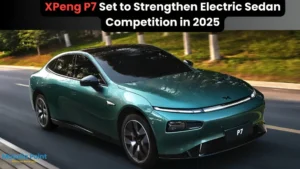XPeng P7 has become one of the most significant names in the electric vehicle market, with growing interest in its blend of futuristic design, advanced technology, and long-range capability. As the electric vehicle industry continues to expand rapidly in 2025, XPeng Motors is positioning the P7 as a direct challenger to established players like Tesla’s Model 3, while also appealing to a new generation of buyers seeking style, performance, and innovation in one package.
Reports from the Chinese EV market indicate that the XPeng P7 has already gained traction with young urban buyers who value technology-driven experiences as much as driving performance. With China continuing to lead global EV adoption, the P7 has an important role in XPeng’s ambition to expand beyond its home market and compete on a worldwide scale.
XPeng P7 Features and Technology
XPeng P7 stands out not only for its design but also for its integration of cutting-edge smart systems. The vehicle features XPeng’s proprietary Xmart OS, which includes advanced voice recognition, seamless smartphone integration, and over-the-air updates. These updates allow the car to continuously improve after purchase, much like a smartphone, keeping customers connected to the latest innovations without needing to replace the vehicle.
Autonomous driving is one of the biggest highlights of the P7. Equipped with XPeng’s Navigation Guided Pilot (NGP), the car can manage highway driving, lane changes, and adaptive cruise control with minimal driver intervention. According to CarNewsChina, the company continues to refine its driver-assistance features to remain competitive with Tesla’s Autopilot and other global systems. This makes the XPeng P7 a compelling choice for drivers who value convenience and future-proofing.
Performance is another area where the P7 makes its mark. With dual-motor all-wheel drive versions available, the car can accelerate from 0 to 100 km/h in just over 4 seconds, offering sports car-like speed in a family sedan body. Its range is equally impressive, with certain versions capable of traveling over 600 kilometers on a single charge under Chinese testing standards. Combined with rapid-charging technology, drivers can add significant mileage in a short amount of time, addressing one of the most common concerns around EV usability.
Global Market Outlook for XPeng P7
As the XPeng P7 continues to expand its presence, the company’s strategy involves strengthening its foothold in both domestic and international markets. In Europe, where EV adoption is accelerating, the P7 has already been introduced in select countries. Its competitive pricing compared to Tesla and premium German automakers has drawn interest from buyers looking for affordable yet high-performing electric sedans.
Analysts believe XPeng is targeting a wider rollout across Europe and potentially North America in the coming years, though regulatory challenges remain. If successful, this could allow the XPeng P7 to capture a portion of markets traditionally dominated by Tesla, BMW, and Mercedes-Benz.
Pricing remains one of XPeng’s strongest selling points. While official figures differ by region, the P7 is often priced lower than comparable Western EVs while still offering luxury-level features. This combination of value and performance has made it a talking point among EV enthusiasts and industry experts alike.
XPeng’s ambitions are not limited to the P7 alone. The company continues to diversify its lineup with SUVs and upcoming models, aiming to compete across multiple segments. The success of the XPeng P7 could serve as a blueprint for how XPeng positions itself against both established automakers and new EV startups entering the market.
The growing momentum around vehicles like the XPeng P7 also coincides with interest in other Chinese electric cars, such as the Geely Galaxy M9 SUV, which highlights how China’s automakers are increasingly challenging traditional automotive powerhouses on the global stage.
Outlook for XPeng P7 in 2025
The XPeng P7 is no longer just a domestic success story—it is shaping up to be a global contender in the electric sedan space. Its sleek design, powerful performance, and intelligent features make it a serious alternative to Tesla’s Model 3 and other premium EVs. With increasing government incentives for electric mobility and expanding charging infrastructure, the P7 could find even more momentum in 2025 and beyond.
If XPeng manages to sustain competitive pricing while continuously improving its autonomous driving technology, the XPeng P7 could establish itself as one of the most important electric sedans of the decade. As global buyers become more open to Chinese electric cars, the P7 might not only change perceptions but also set new benchmarks for what drivers can expect from next-generation EVs.















